Maple leaves have started to change their colours: the best viewing spots for autumn colours in Kansai.
Japan may be known for the cherry blossom that covers the nation and preoccupies the citizenry for a week in spring, but the autumnal colours – koyo – are no less spectacular. The leaves start to change in October and peak autumn colours are usually reached in mid-November. The last of the colours fade by mid-December. So, unlike the brief week of pink insanity, the longer changing of the leaves means that you can enjoy the event without the fear that a single downpour will end it all and with a lesser chance of being walloped in the face by a selfie stick.
Having said that, wherever you go, it will still be busy. Supposedly “secret” places have been discovered, pretty red temple gardens that may be off foreign tourists’ beaten track are well-known to the Japanese. There are, however, two things you can do to enhance your experience: avoid weekends and aim to enter the better-known temples around an hour before they close.
Osaka / 大阪
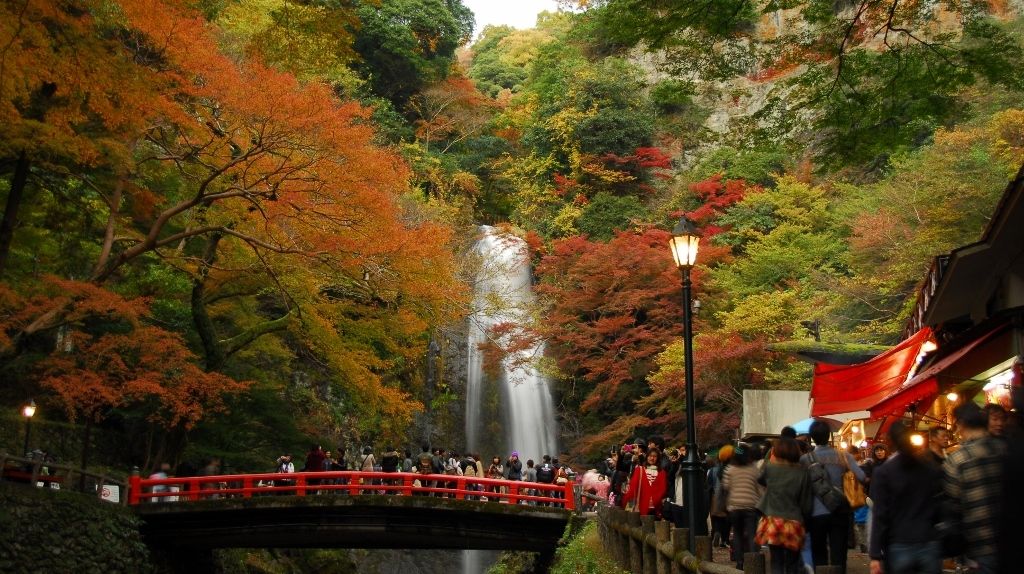
Osaka is not known as an autumn-leaf viewing destination. However, there is one special exception: Minoh park and waterfall. Easy to access from Umeda, Minoh is still not really frequented by foreign tourists.
The park is the closest dose of nature you can reach from the urban sprawl of central Osaka. The path to the waterfall – think of it as Osaka’s version of Kyoto’s Philosopher’s Path – is lined with maple and ginkgo and surrounded by hills that, in season, turn vibrant yellow, red and orange. After admiring the lovely Ryuanji temple and its red bridge framed by the coloured leaves, why not try the popular momiji tempura – battered and fried maple leaves – that the area is famous for.
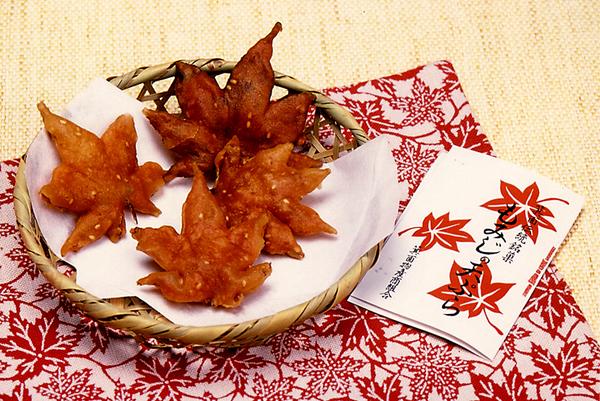
The three kilometer paved walk to the falls starts from opposite Hankyu Minoh station and should take the average person no more than 45 minutes.
Note : the park is often confusingly romanised as Minoh, Minoo and Mino.
Access : Take the Hankyu Takarazuka line from Umeda station to Ishibashi station (15 minutes). Change platforms here for the train to Minoh (5 minutes) 270 yen.
Nara / 奈良
A visit to Nara, whilst busy, will certainly not have the crowds that Kyoto’s gardens and temples draw in autumn. The small stream on the approach to the famous Todaiji temple is lined with maple and the northern half of the park – near the temple – has ginkgo and maple trees.
If you want to experience the leaves away from most of the crowds and in a pretty garden setting, head to Yoshikien. A 10-minute walk west of Todaiji temple, Yoshikien (free of charge to foreign tourists) consists of three separate areas – a pond garden, a moss garden and a tea ceremony garden.
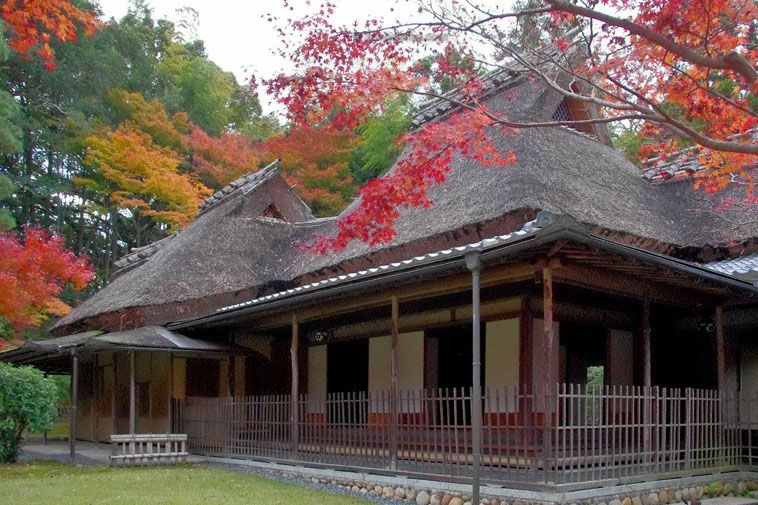
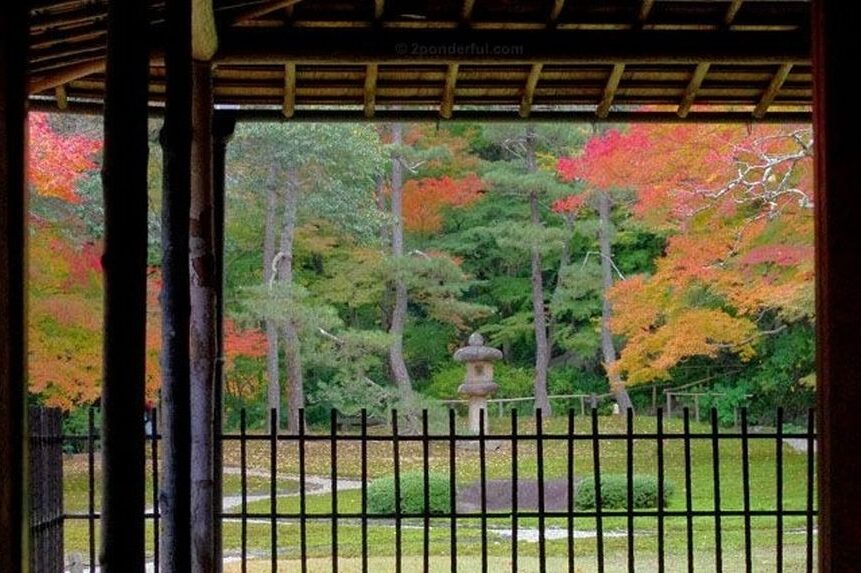
Nearby Isuien garden looks particularly attractive in autumn as it makes use of the “borrowed scenery” of Todaiji’s Nandaimon gate and Mount Wakakusayama. The front garden is from the mid-1600’s whilst the larger rear garden was built in 1899. There are various tea houses throughout the gardens from which to admire the leaves.
Near to the gardens, a view of Nara, Todaiji, the park and the surrounding area may be had for free from the viewing platform of the Nara Prefectural Office.
Access : Both gardens are located a 15-minute walk from Kintetsu Nara station.
Bus. : Take an Aoyamajutaku or Kunimidai bound bus and get off at Oshiagecho bus stop (5 minutes, 190 yen).
Yoshikien 「吉城園」
Hours : 09:00-17:00 (last entry at 16:30). Closed between December 28th and February 28th. Admission : Free for foreign tourists/ 250 yen for Japanese.
Isuien 「依水園」
Hours : 09:30-16:30 (last entry at 16:00). Closed Tuesdays but open on Tuesdays in November.
Admission : 900 yen.
Kyoto / 京都
Western Kyoto : Arashiyama and Sagano
The hills beyond Arashiyama‘s famous Togetsukyo bridge in their autumn splendour is probably the iconic Kyoto autumn scene: so expect to share it with thousands of others! However, hiring a bike or heading off on foot to the north to the slightly quieter Sagano district and a visit to Jojakkoji Temple and Nisonin Temple would be rewarding.
Alternatively, a trip on the Sagano Scenic Railway offers a slow, 25-minute ride past the coloured hills and along a steep ravine with views of the Hozugawa river. If you are wrapped up warm, the one open car – that is the one without glass windows – is recommended.
Central Kyoto
The sea of red that surrounds the viewing deck of Kiyomizudera is quite a fantasic sight. Well, that is after you have waited patiently, or not so patiently, for your turn at the front of the throng.A late in the day visit will be less crowded. However, the crowds thin out as you move away from the viewing platform as the site is rather large. The temple has equally popular evening light-ups.
South Kyoto
Without a doubt, Tofukuji could be the most famous read leaf-viewing spot in the whole of the greater Kyoto area. If the weather plays nice (cold nights + warm days = splendidly red leaves), it is indeed a great place to admire the autumn colours. So great, in fact, that you will experience them with half of western Japan and question your sanity in going to the most popular autumn-leaf viewing temple at the height of autumn-leaf viewing season! It is so well-known for red leaves that when I visited it on a quiet June day, a Japanese friend asked me “Why?”
Kyoto spots that should be less crowded.
That “should” is a rather large caveat. I can guarantee you won’t experience the crush of Tofukuji or Kiyomizudera but I won’t pretend that you will be sipping a pipping hot, roasted barley tea in splendid isolation. You should, however, be able to enjoy the leaves, take photos without having to wait your turn, and be able to walk around without tripping over tripods.
Shinnyodo temple (真如堂)
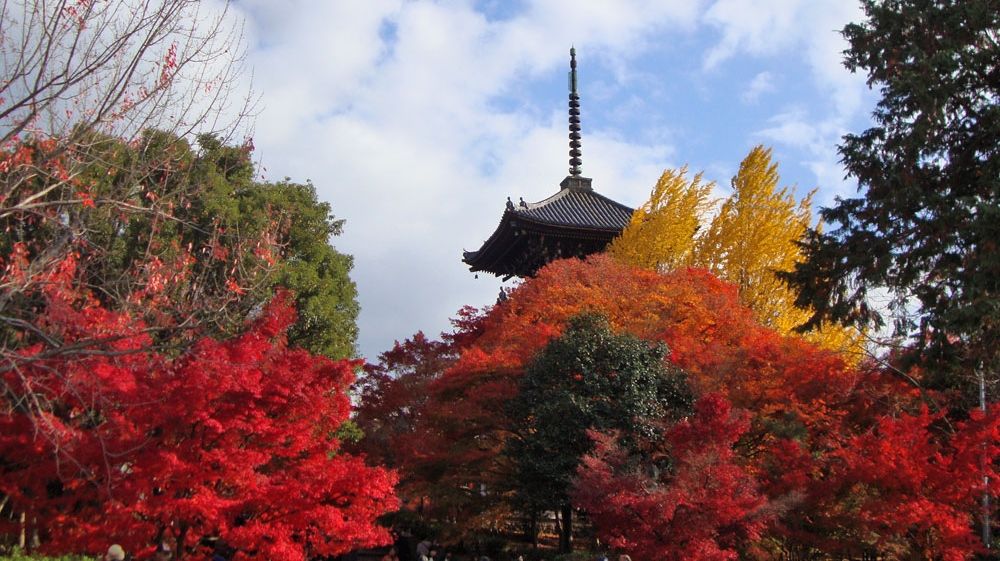
Calm, serene, never particularly busy and often over-looked, the low-key Shinnyodo is worth a look at anytime of the year. However, those in the know head over in autumn due to the abundant maple trees that burst into scarlet in November. The relatively large grounds with its attractive pagoda can be explored free of charge.
Access : From Kyoto station: take bus 5 to Shinnyodo-mae bus stop (35 minutes, 210 yen). The temple is a five-minute walk from there.
On foot : the temple lies between Heian shrine and Ginkakuji and is a 20-minute walk from each. It is located behind the Kurodani temple complex.
Hours : 09:00-16:00 (last entry at 15:45)
Admission : Outer area free /500yen (inner chamber and gardens)
Eikando (永観堂)
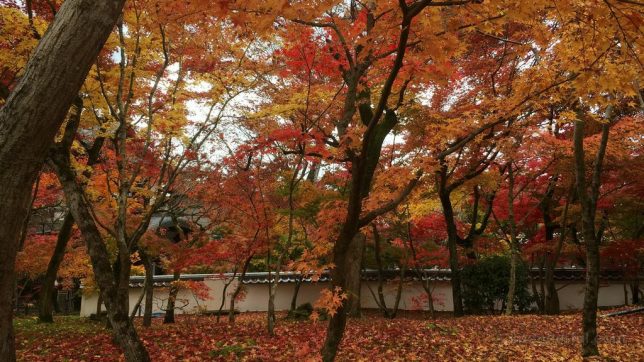
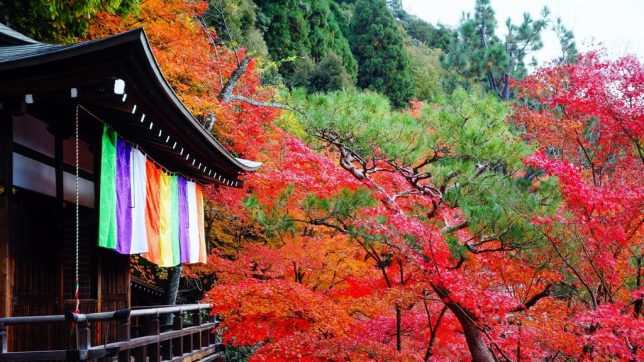
I visited this very famous maple spot last year on a weekday. It was so glorious that I spent three hours wandering around the large site, climbing the wooden stairwells to the viewpoint and taking hundreds of pictures! Going on a weekday certainly helped, but the grounds are large so it never felt uncomfortably crowded.
There is a central, maple-framed pond and bridge and a hillside pagoda that peeks out from the red leaves. There are several viewing platforms connected by wooden walkways. A thoroughly lovely place.
Access : It is a 15-minute walk from Keage subway station on the Tozai line. It is very near to the start of the Philosopher’s Path.
Hours : Daytime unfortunately the usual 600 yen entrance fee is bumped up to 1,000 yen (adults) in the leaf-viewing season/400 yen (children).
Nighttime : 8th November~4th December 17:30-20:30, 600 yen.
Enko-ji (圓光寺)
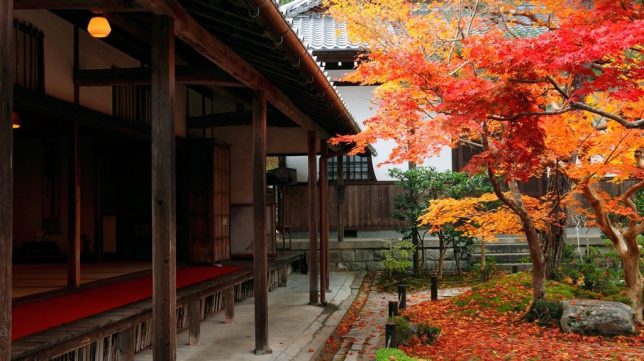
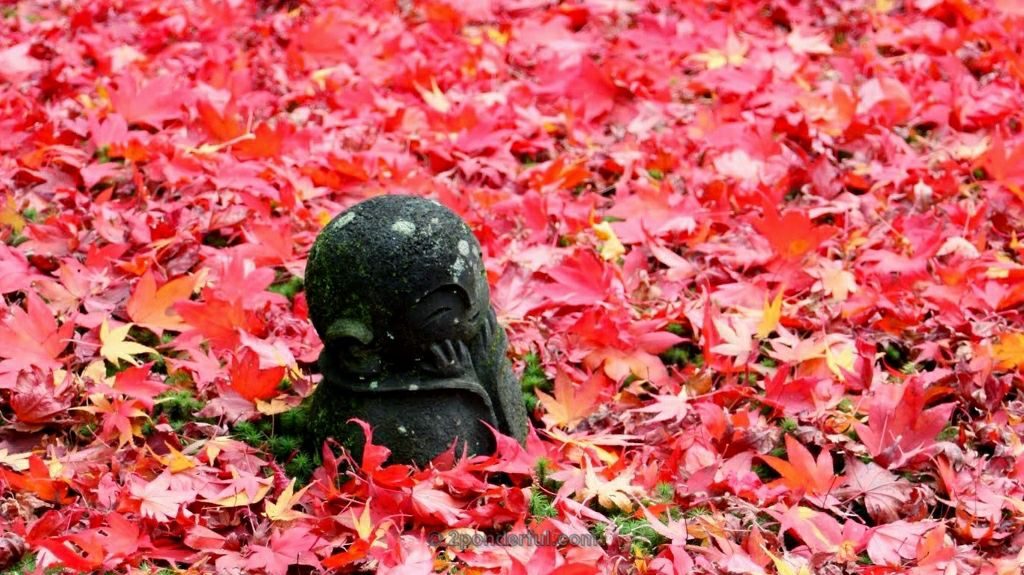
With its unusual, modern, dry garden, Enkoji offers the chance to see something you have not seen before in Kyoto. The garden has been left deliberately incomplete – you are supposed to complete it with your imagination.This is also a temple that is worth visiting a little after the peak colours: the carpet of red leaves that spreads out from the viewing platforms of the drawing room and treasure house is the main attraction here. The stone lanterns and cute jizo statue surrounded by fallen maple leaves is a wonderful sight.There is also a small bamboo grove and a hill that offers a partial view of Kyoto.
With the temple’s growing popularity, between November 16th and December 8th, for a fee of 800 yen, 50 people a day are able to enjoy the solitude between 07:30~08:30 before the official opening time. You need to make a reservation in advance by phone (075) 781-8025.
Website with some English and showing beautiful seasonal videos
Hours : 09:00-17:00
Admission : 500 yen (adults); 400 yen (children over 12); 300 yen (children 6-12 years).
Access : Take bus 5 to Ichijojikotani-cho and it’s a 10-minute walk or the Eizan railway line to Ichijoji station and it’s a 15-minute walk.
Ikkyu-ji (一休寺)
With only one English review on Trip Advisor, you can be almost assured of a peaceful visit to this temple in Kyotanabe. Located half way between Kyoto and Nara, in season, Ikkuji has a beautiful moss and red maple-lined approach. Once inside, you can admire the large dry garden and drink tea. If you want to combine your visit with lunch, vegetarian dishes are served (1,800 – 4,600 yen. Must be booked in advance).
Hours : 09:00-17:00.
Admission : 500 yen (12 and older); 250 (children).
Access : From Kyoto station – a 20-minute walk from Shintanabe station on the Kintetsu Kyoto line.
From Keihan Gion Shijo station – a 15-minute walk from Kintetsu Shintanabe station.
From Osaka – At JR Kyobashi station take the Gakkentoshi line (37 minutes by rapid train).
English website http://www.ikkyuji.org/en/
And finally – The folk at Japanguide provide very in depth coverage of the state of the changing leaves throughout Japan. You can use the information to see which site has peak colours during your intended visit. Alternatively, use it to head to a place that is pre or past peak for a quieter experience. http://www.japan-guide.com/blog/koyo16/